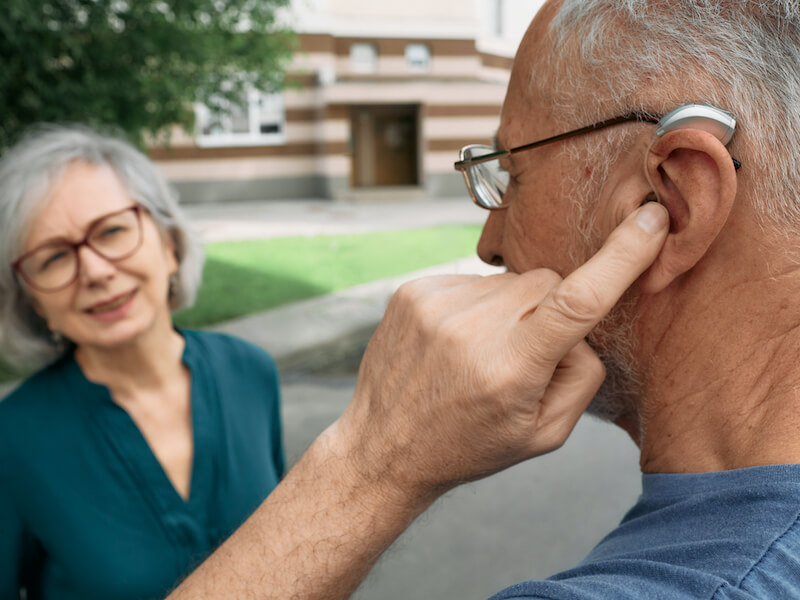
Have you ever been watching your favorite Netflix show when your internet suddenly disappears? Instead of discovering who won the baking show, you have to watch a never-ending spinning circle. All you can do is wait around for it to come back. Maybe it’s your modem, could be your router, possibly it’s the internet provider, or maybe it’ll just fix itself. It’s not a great feeling.
When technology malfunctions, it can be very frustrating. Your hearing aids certainly fall into this category. Most of the time, your hearing aids will provide you with the means to stay connected to loved ones, have conversations with co-workers, and keep up with your neighbors.
But when they stop working, your hearing loss symptoms can suddenly become much more frustrating. The technology you’re counting on has let you down. Why would your hearing aids just quit functioning? So what should you do? Here are the three common ways your hearing aids can fail and how to diagnose and identify them.
Three common issues with hearing aids (and some possible solutions)
Even though hearing aids are complex technology, individuals might experience three common issues with them. Here’s what might be causing those issues (and what you can do to correct them).
Whistling and feedback
Perhaps you suddenly begin to hear an awful high-pitched whistling while you’re attempting to have a chat with a friend or family member. Or maybe you hear some feedback. You begin to think, “this is weird, what’s up with this whistling”?
Here are three possible issues that could be causing this whistling and feedback:
- Your hearing aids may not be seated in your ears correctly. Try to remove them and re-seat them. If the fit isn’t correct you might need to come see us so we can help you get a better fit.
- The tubing that connects the hearing aid with the earmold, on behind-the-ear models, can occasionally become compromised. Take a close look to identify whether the tube may have separated or might be damaged in some way.
- Earwax accumulation in your ear canal can undermine how your hearing aid functions. You’ll notice this comes up fairly often. That includes causing your hearing aids to whistle or feedback. You can attempt to clean some of the earwax out (never use a cotton swab) and if that doesn’t work out, you can get some help from us.
Depending on the underlying cause of the feedback, we can help you deal with these problems if you can’t fix them on your own.
No sound coming from your hearing aids
Your hearing aids should make, well, sound. That’s their main function! So if you find yourself thinking, “I don’t hear any sound in my hearing aid,” well, then something is definitely not right. So what could be the explanation when hearing aids work but no sound comes out? Here are several things to watch for:
- Power: Look, we’ve all forgotten to turn on the hearing aid before. Check for this first. Then you can eliminate that as potential problems.
- Earwax buildup: Yup, earwax strikes again. Have a close look to see if you find any earwax on the microphone or speakers. You want to make certain the device is good and clean.
- Your settings: Scroll through the personalized settings if your device has them. It’s feasible your hearing devices are not on the right custom program (so maybe your hearing aids think you’re in a concert hall instead of around the kitchen table). The sound you’re hearing could be off as a result.
- Batteries: Make certain your batteries are fully charged. And even rechargeable batteries should be swapped out on occasion.
If these steps don’t help with your issues, we may have the answers. Whether repair, maintenance, or replacement is your next step, we will be capable of helping you figure that out.
When you have your hearing aids in, your ears hurt
Perhaps your hearing aids are fine functionally but they hurt when you put them in. And you’re probably wondering why your hearing aids would make your ears hurt. You’re not as likely to wear your hearing aids on a daily basis if they make your ears hurt. So, why do they hurt?
- Fit: The fit of the device is the most obvious problem. After all, the majority of hearing aids work best when they fit tightly. Which means that there can sometimes be discomfort involved in a poor fit. Some hearing aid models can be fit to the distinct shape of your ears. Over the long haul, you will have fewer problems if you have a snug fit. If you come in for a consultation, we can help you achieve the best fit for your device.
- Time: Usually, it just takes a little while to get accustomed to your hearing aids. Each individual will have a different adjustment period. It’s worth talking about when you buy your hearing aids so you have a reasonable concept of how long it may take you to get comfortable with your devices. Also, talk to us about any discomfort you might be having.
Bypass issues with a little test drive
One of the best ways to avoid possible issues with hearing aids is to take them out for a bit of a test drive before you decide. Most of the time we will have loaner pairs for you to try out before you make a decision.
As a matter of fact, we can help you determine the best kind of hearing aid for your requirements, adjust the fit to match your ears, and help you take care of any ongoing issues you may have with your devices. We will be your resource for any help you need.
And that’s most likely more reliable than your internet company.

